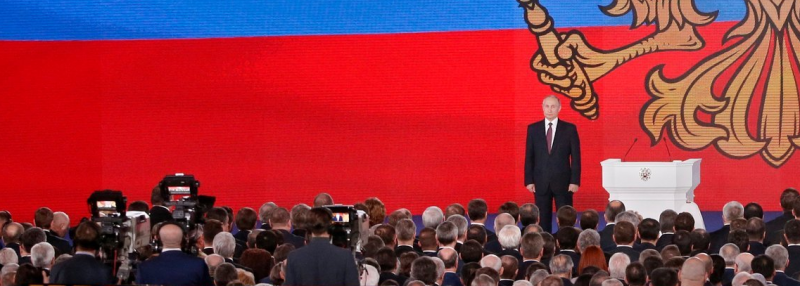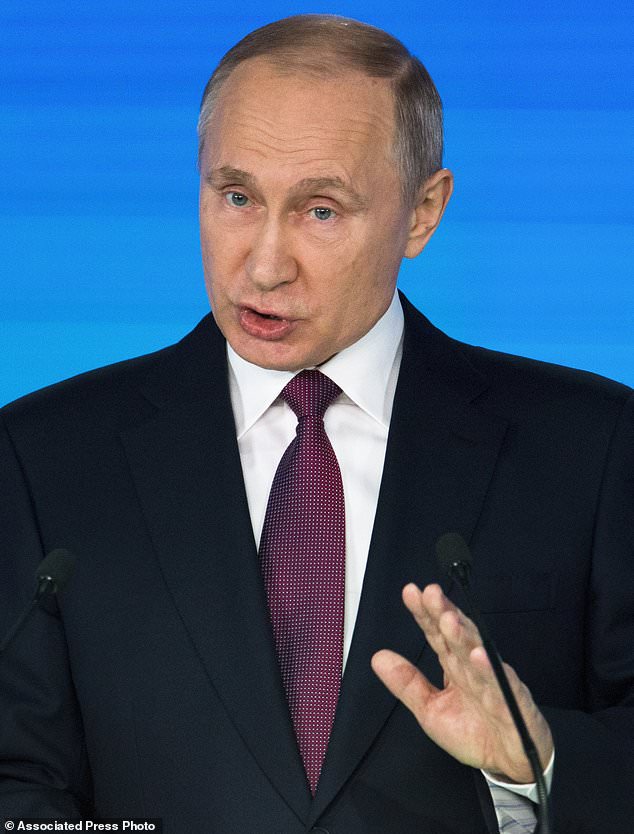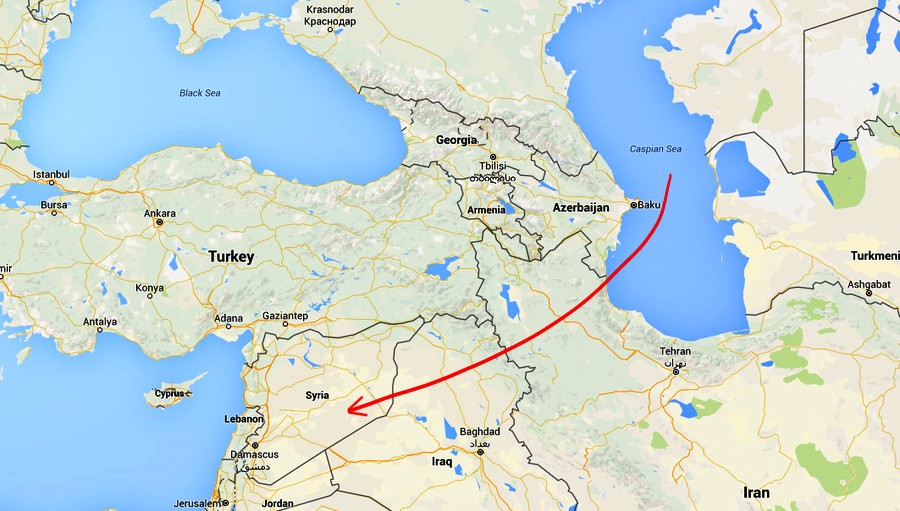
A new book details why future historians may well identify Putin’s landmark March 1 speech as the ultimate game-changer in the 21st century New Great Game in Eurasia
Future historians may well identify Russian President Vladimir Putin’s landmark March 1 speech as the ultimate game-changer in the 21st-century New Great Game in Eurasia. The reason is minutely detailed in Losing Military Supremacy: The Myopia of American Strategic Planning, a new book by Russian military/naval analyst Andrei Martyanov.
Martyanov is uniquely equipped for the task. Born in Baku in the early 1960s, he was a naval officer in the USSR era up to 1990. He moved to the US in the mid-1990s and is now a lab director in an aerospace firm. He belongs to an extremely rarified group: top military/naval analysts specializing in US-Russia.
From quoting Alexis de Tocqueville and Leo Tolstoy’s War and Peace to revisiting the balance of power during the Soviet era and beyond, Martyanov carefully tracks how the only nation on the planet “which can militarily defeat the United States conventionally” has reacted to a situation where any “meaningful dialogue between Russia and America’s politicians is virtually impossible.”
What is ultimately revealed is not only a case of disregarding basic Sun Tzu – “if you know the enemy and know yourself, you need not fear the result of a hundred battles” – but most of all undiluted hubris, turbocharged, among a series of illusionistic positive feedback loops, by Desert Storm’s “turkey shoot” of Saddam Hussein’s heavily inflated, woefully trained army.
The United States’ industrial-military-intel-security complex profits from a compounded annual budget of roughly US$1 trillion. The only justification for such whopping expenditure is to manufacture a lethal external threat: Russia. That’s the key reason the complex will not allow US President Donald Trump even to try to normalize relations with Russia.
- Yet now this is a whole new ball game as the US faces a formidable adversary that, as Martyanov carefully details, deploys five crucial capabilities.
- Command, control, communications, computers, intel, surveillance and reconnaissance capabilities equal to or better than the US.
- Electronic warfare capabilities equal to or better than the US.
- New weapons systems equal to or better than the US.
- Air defense systems that are more than a match for US airpower.
- Long-range subsonic, supersonic and hypersonic cruise missiles that threaten the US Empire of Bases and even the entire US mainland.
So how did we get here?

Debunking American military mythology
Martyanov argues that Russia, all through the first decade of the millennium, spent enough time “defining herself in terms of enclosed technological cycles, localization and manufacturing.”
In contrast, Germany, even with a large, developed economy, “cannot design and build from scratch a state-of-the-art fighter jet,” while Russia can. Germany “doesn’t have a space industry, and Russia does.”
As for those who pass in the US for Russian “experts,” they never saw these techno-breakthroughs coming; they “simply have no grasp of the enormous difference between the processes involved in a virtual monetized economy and those involved in manufacturing of the modern combat informational control system or of the cutting-edge fighter jet.”
Martyanov produces plenty of snapshots. For instance, “Russia …without any unnecessary fanfare, launched a complete upgrade of her naval nuclear deterrent with state of the art ballistic missile submarines (SSBNs) of the Borey-class (Project 955 and 955A)…. This is the program which most Russia ‘analysts’ were laughing at ten years ago. They are not laughing any more.”
A central tenet of the book is to debunk American military mythology. That must include in-depth reappraisal of World War II and a re-examination of how the Soviet Navy was closing the technological gap with the US Navy already by the mid-1970s, even as it remained “a dedicated sea denial force designed strictly for deterrent.” The Soviet Navy, as the Russian Navy today, “was built largely for a single purpose: to prevent a NATO attack on the USSR from the sea.”
Moving to the post-USSR era, it’s inevitable that Russia had to come up with a concerted strategy to counteract the North Atlantic Treaty Organization’s relentlessly moving east – a clear violation of the (verbal) agreement between George Bush Senior and Mikhail Gorbachev.
And that leads us to the holy of the holies concerning the favorite Beltway mantra, “Russian aggression.” Even as Russia “does have the capability to deal major damage to NATO,” as Martyanov reminds us, “why would Russia attack or damage European countries which are worth way more for Russia free and prosperous than they would be if damaged and, theoretically, subjugated?”

The caliber of Brzezinski’s nightmare
The book’s Chapter 7, titled “The Failure to Come to Grips with the Modern Geopolitical Realignment,” brings us back to another game-changing moment: the 2015 Victory Parade in Moscow, with Putin and Chinese President Xi Jinping sitting next to each other, graphically exposing the worst Zbigniew “Grand Chessboard” Brzezinski nightmare of the “two most powerful Eurasian nations declaring full independence from the American vision of the world.”
And then there was Russia’s campaign in Syria; on October 7, 2015, six 3M14 Kalibr cruise missiles were launched in intervals of five seconds from the Russian Navy’s small missile ships in the Caspian Sea, aimed at Daesh targets in Syria. The USS Theodore Roosevelt and its carrier battle group immediately understood the message – exiting the Persian Gulf in a flash.
Since then, the message has been amplified: the Eastern Mediterranean, the Black Sea, or “the Russian Navy’s Pacific zones of responsibility” are becoming “completely closed zones for any adversary.”
The lesson from the Kalibr-in-the-Caspian saga, writes Martyanov, is that “for the first time it was openly demonstrated, and the world took note, that the American monopoly on symbols of power was officially broken.”
As Martyanov shows how “in both Donbass and especially in Syria, Russia called the American geopolitical and military bluff,” there’s no question this Syria-Ukraine interconnection – which I analyzed here – is the foundation stone of the current “historically unprecedented anti-Russian hysteria in the US.”
So the ball – just like the one offered by Putin to Trump in Helsinki – is in the United States’ court. What Martyanov describes as “the deadly combination of contemporary American elites’ ignorance, hubris and desperation,” though, cannot be underestimated.
Already during his election campaign, Trump announced multiple times that he would contest the post-Cold War international (dis)order. Helsinki was a graphic demonstration that now Trump’s “drain the swamp” faces a massive immovable object, as the swamp will take no prisoners to preserve its trillion-dollar power.
In contrast, Russian diplomacy, as explicitly reaffirmed once again this week by Putin himself, is adamant that anything is permitted when it comes to avoiding Cold War 2.0.
But just in case, Russia’s new-generation weapons have now been formally unveiled by the Defense Ministry, and some of them are already operational.

‘Pearl Harbor meets Stalingrad’
It’s crystal clear that President Trump is applying Kissingerian divide-and-rule tactics, trying to reduce Russian political/economic connectivity with the two other Eurasian integration poles, China and Iran.
Still, the swamp cannot possibly contemplate The Big Picture – as this must-watch conversation between two of the very few Americans who actually know Russia in-depth attests. Professor Stephen Cohen and Professor John Mearsheimer go to the jugular: Nothing can be done when Russophobia is the law of the land.
Over and over again, we must go back to Putin’s March 1 speech, which presented the US with what can only be described, writes Martyanov, as “a military-technological Pearl Harbor-meets-Stalingrad.”
Martyanov goes all the way to explain how the latest Russian weapons systems present immense strategic – and historical – ramifications. The missile gap between the US and Russia is now “a technological abyss,” with ballistic missiles “capable of trajectories which render any kind of anti-ballistic defense useless.” Star Wars and its derivatives are now – to use a Trumpism – “obsolete.”
The Kinzhal, as described by Martyanov, is “a complete game-changer geopolitically, strategically, operationally, tactically and psychologically.” In a nutshell, “no modern or prospective air-defense system deployed today by NATO can intercept even a single missile with such characteristics.”
This means, among other things – and stressing it is never enough – that the whole Eastern Mediterranean can be closed off, not to mention the whole Persian Gulf. And all this goes way beyond asymmetry; it’s about “the final arrival of a completely new paradigm” in warfare and military technology.
Martyanov’s must-read book is the ultimate Weapon of Myth Destruction (WMD). And unlike the Saddam Hussein version, this one actually exists. As Putin warned (at 7:10 in the video), “They did not listen to us then.” Are they listening now?
Pepe Escobar is correspondent-at-large at Asia Times
This article was originally published by “Asia Times”
The 21st Century
The views expressed in this article are solely those of the author and do not necessarily reflect the opinions of The 21st Century.
